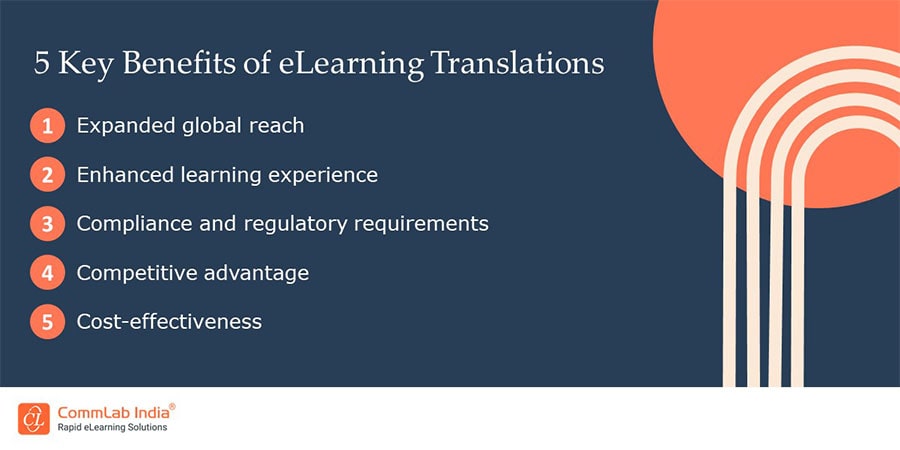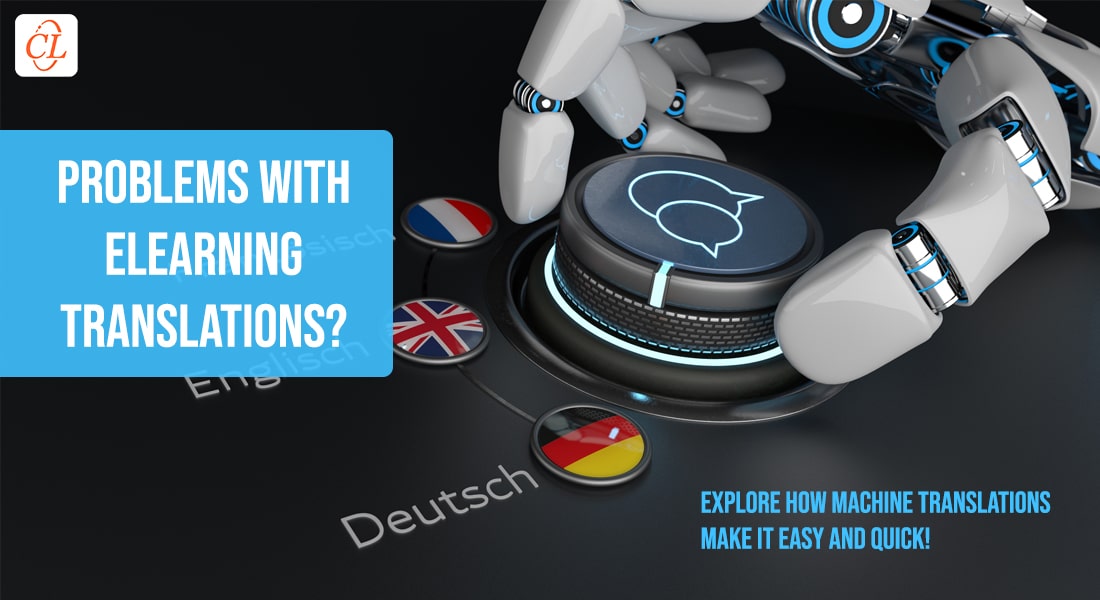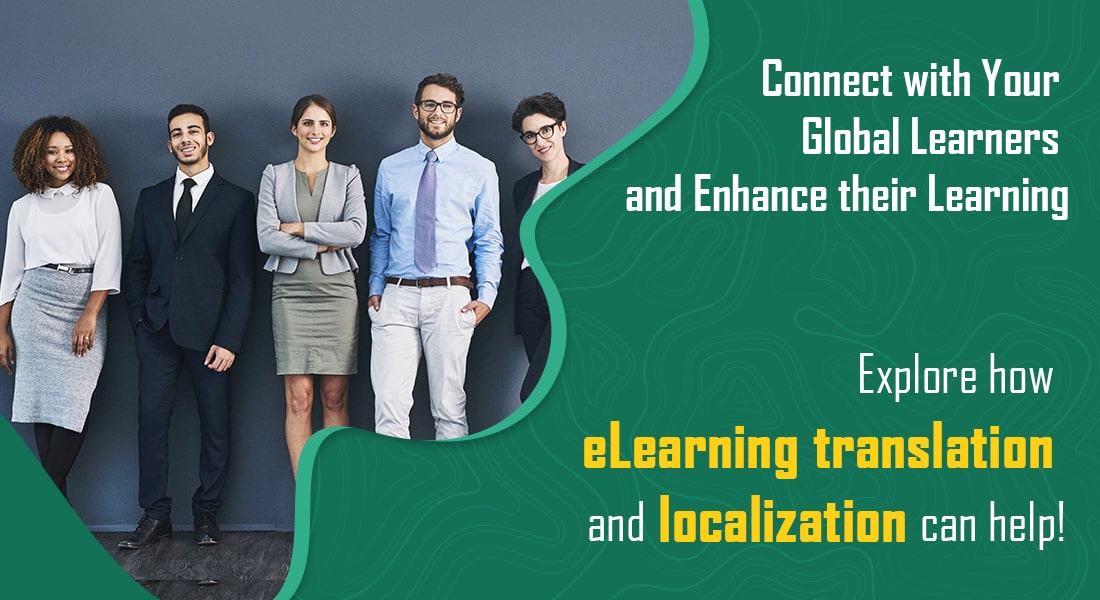What's Shaping the World of eLearning Translations? — Innovative Trends to Watch!
With organizations going global, the importance of eLearning translations is scaling. Read on to explore the innovative trends in the world of translations.

In today's globalized world, where connectivity knows no boundaries, the demand for eLearning translations is skyrocketing. As businesses expand globally and individuals seek learning opportunities beyond linguistic constraints, the importance of effective eLearning translations cannot be overstated. This blog entails the reasons for the upsurge in eLearning translations, the benefits they offer in the contemporary business landscape, and the innovative trends reshaping this dynamic field. Keep scrolling to delve deep.
The Demand for eLearning Translations is Skyrocketing!
Explore popular trends that are shaping the world of eLearning translations:
- Artificial Intelligence (AI) and Machine Learning (ML)
- Neural Machine Translation (NMT)
- Multimedia Translation
- Mobile Translation
- Remote Collaboration Tools
Why the Upsurge in eLearning Translations?
The digital revolution has transformed the way corporate training is delivered. With the rise of eLearning platforms, organizations can reach a diverse audience regardless of geographical location. This has led to an increased need for translating eLearning content to cater to learners from different linguistic backgrounds. Additionally, with globalization, companies are no longer confined to their home markets. They operate in diverse regions, each with its unique language and culture. This has made it imperative for businesses to communicate with employees, partners, and customers in their native languages, driving the demand for eLearning translations even further.
What are the Benefits of eLearning Translations in Today’s Business Space?

1. Expanded Global Reach: Translating eLearning content enables organizations to reach a global audience, breaking down language barriers and fostering inclusivity. This helps organizations augment their reach across the world and make a mark in the global market.
2. Enhanced Learning Experience: Learners grasp concepts more effectively when presented in their native language, leading to improved comprehension and retention. They feel valued when training materials are available in their preferred language. Engaged employees are more likely to apply what they’ve learned, leading to better performance.
3. Compliance and Regulatory Requirements: Many industries, such as healthcare, finance, and legal, have strict compliance regulations. They require training materials to be available in multiple languages to comply with local regulations and standards. Translating eLearning content ensures that employees across different geographies receive consistent and compliant training.
4. Competitive Advantage: Organizations that offer multilingual eLearning experiences gain a competitive edge by appealing to diverse markets and attracting international talent. It demonstrates cultural sensitivity, fosters inclusivity, and enhances the overall learning experience.
5 Cost-Effectiveness: Investing in eLearning translations upfront may seem like an expense, but it pays off in the long run. It reduces the need for costly in-person training sessions and ensures consistent messaging across the organization.
→ Access Tool: Multilingual Wrapper for Effective eLearning Translations
5 Popular Trends Shaping the World of eLearning Translations
1. Artificial Intelligence (AI) and Machine Learning (ML)
The rapid advancement of AI-driven translation tools is one of the most remarkable trends in the world of eLearning translations. AI-powered translation tools are revolutionizing the eLearning translation process by automating tasks such as language detection, text translation, and quality assurance. These tools leverage machine learning algorithms to improve accuracy and efficiency over time. AI-driven tools can translate content faster, maintain consistency, and adapt to context.

2. Neural Machine Translation (NMT)
NMT systems utilize deep learning techniques to produce more fluent and contextually accurate translations compared to traditional statistical methods. This technology is particularly effective for complex language pairs as they capture context and develop realistic and fluent translations. NMT-powered translation tools like DeepL and Google’s BERT provide more accurate results than traditional methods, making global communications seamless and benefiting various business domains.
3. Multimedia Translation
With the increasing use of multimedia content in eLearning, multimodal translation solutions are gaining traction. Multimodal translation combines text, images, and audio to create a holistic learning experience. These tools can translate text, audio, and visual elements simultaneously, providing a seamless learning experience across languages. For instance, subtitles in videos, image descriptions, and voiceovers can all be translated to enhance comprehension.
4. Mobile Translation
As mobile devices become ubiquitous, there is a growing demand for eLearning content that is accessible on mobile devices such as smartphones and tablets. Mobile translation apps and responsive design techniques enable learners to access course materials anytime, anywhere, enhancing flexibility and convenience. Naturally, eLearning translation services will focus on localization needs such as user interface and functionality of the mobile learning applications and platforms.
5. Remote Collaboration Tools
Virtual collaboration platforms such as Zoom, Microsoft Teams, and Slack facilitate real-time collaboration among translators, subject matter experts, and project managers, regardless of their location. Cloud-based Translations Management Systems (TMS) streamline communication, project management, and workflow automation, accelerating the eLearning translation process. The centralized hub for glossaries and style guides offered by TMSs is a quick and easy reference for global teams that helps ensure consistency in quality across projects.
If you are new to the world of eLearning translations, here are a few essential tips that’ll help you navigate the terrain seamlessly. Watch video!
Summing it Up!
The world of eLearning translations is evolving rapidly, driven by technological advancements, globalization, and the growing demand for accessible and inclusive learning experiences. By embracing innovative trends such as AI, Neural Machine Translation, Multimodal Translation, Mobile translation, and Remote collaboration tools, organizations can overcome language barriers, expand their reach, and deliver impactful training programs to a diverse global audience. As we navigate the complexities of a digital era, staying abreast of these trends will be crucial for unlocking the full potential of eLearning translations in the years to come.
Are you worried about hosting, updating, and managing multiple translated courses? How about a platform that can do all this for you with zero programming? Well, here’s a tool — Multilingual Wrapper that can reduce the hassle of working with multiple SCORM packages, streamline eLearning translations, and maximize ROI. Access it now!





